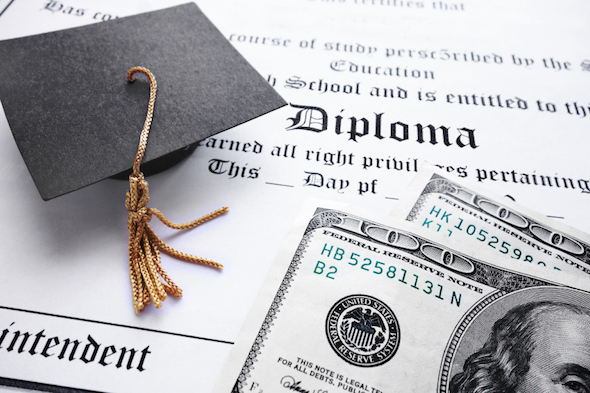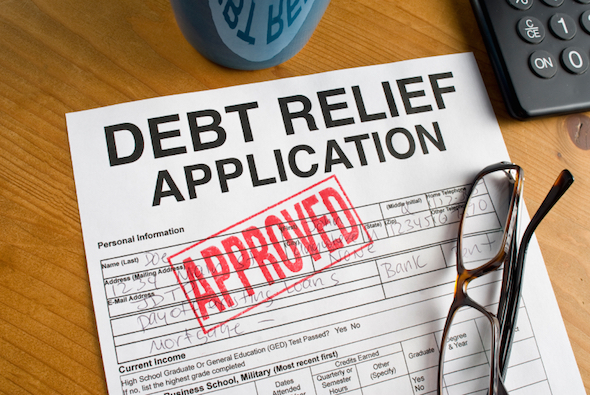Per a U.S. News report, the average yearly cost of attendance is over $22,000 for public colleges and universities and nearly $40,000 for private schools, more students than ever are financing their education. As a result, student loan debt has hit an all-time high, with recent estimates putting the total at just over the trillion dollar mark. For grads entering the still-recovering job market, paying down a mountain of loans can seem like an impossible feat, but there is hope. Thanks to various student loan forgiveness laws, you could be eligible for student loan relief, which can help you get the student loan debt monkey off your back once and for all.
Federal Student Loan Forgiveness
When you take out a student loan, you’re agreeing to pay the money back over a set period of time, the same way you would if you bought a car or a house. If your loan is forgiven, the debt is cancelled out and you’re not responsible for paying it back. There are currently two government-sponsored forgiveness programs from the Obama Administration for students who are saddled with federal student loan debt.
The Public Service Loan Forgiveness program is designed for graduates who are working full-time in a public service position. The type of work you do isn’t important, as long as you’re employed by either a federal, state or local government agency or a non-profit organization that meets the IRS requirements for tax-exempt status. Generally, you can apply for forgiveness of your Direct Loans after you’ve made at least 120 payments towards your debt. Private student loans and loans taken out through the Federal Family Education Loan (FFEL) Program or the Perkins Loan Program aren’t eligible for forgiveness through the program.
If you teach full-time in a qualifying school at the elementary or secondary level, you may be able to get help through the Teacher Loan Forgiveness Program. Generally, you have to be employed for at least five years at a school that’s designated as low-income by the federal government. You can get up to $17,500 in Subsidized or Unsubsidized Direct Loans or Federal Stafford Loans forgiven through the program. Forgiveness isn’t available if you only took out PLUS loans or if any of your loans are in default. A separate program is available for grads with Perkins Loans. You can apply for cancellation of your Perkins Loans after you’ve worked one full academic year in an eligible low-income school.
Student Loan Debt Relief

If you don’t qualify for federal student loan forgiveness, you may be able to ease your student debt burden through a loan repayment program. Basically, repayment assistance programs give you money to pay down your student loans in exchange for a specific work commitment.
For example, nursing students can get up to 60% of their loan balance paid off through the NURSE Corps Loan Repayment Program. Eligible students just have to commit to working for at least two years at an approved facility. Student loan repayment assistance programs are offered by state and federal government agencies, private employers, non-profit organizations and certain colleges and universities.
Income-Based Forgiveness
Help is also available for students who are struggling to make their loan payments but don’t qualify for student loan debt relief or repayment assistance. The Pay As You Earn program lets you make payments based on your income and family size. You commit to paying 10% of your discretionary income each month towards your loans and after 20 years, your remaining balance is automatically wiped out.
Under the Income-Driven Repayment Plan, your payments are spread out over a 20-to-25-year period, but you have to generally pay 15% of your discretionary income towards your debt. Once the 25 years is up, anything you still owe is forgiven.
Don’t Forget About Your Taxes

Ordinarily, the IRS considers forgiven debts to be taxable income but the rules are slightly different for student loans. If you’re eligible for federal loan forgiveness as a teacher or public service employee, then you won’t have to pay taxes on the cancelled debt, regardless of the amount.
If you’re working off your student loan debt through a repayment assistance program, you’ll have to pay taxes on the benefits you receive. Even though the Pay As You Earn and Income-Based Repayment plans technically offer loan forgiveness, you’ll still have to pay taxes on the debt that’s written off. When you’re weighing all of your loan forgiveness and repayment options, it pays to know what the potential tax implications are.
Tips for Managing Debt
- A financial advisor can help you incorporate debt management into your long-term financial plan. Finding a financial advisor doesn’t have to be hard. SmartAsset’s free tool matches you with up to three vetted financial advisors who serve your area, and you can interview your advisor matches at no cost to decide which one is right for you. If you’re ready to find an advisor who can help you achieve your financial goals, get started now.
- Planning ahead for your student loan debt can pay major dividends down the road. Check out SmartAsset’s student loan calculator to begin the process.
Photo Credit: ©iStock.com/YinYang, © iStock.com/zimmytws, © iStock.com/Kirby Hamilton
